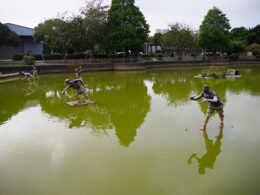Going vegetarian can help reduce carbon emissions! Since 2010, there has been a wave of artificial meat in Europe and the United States, advocating more consuming artificial meat to reduce carbon emissions and save the increasing temperature of the global warming crisis. Is that artificial beef better than “real meat”?
Evanston, Illinois (Business Northeast) – Do you know how much meat is consumed globally in a year? Scientists predict that global meat consumption will reach 470 million tons before 2050, and a large amount of meat consumption will cause environmental damage to the earth. According to the United Nations Food and Agriculture Organization (FAO) data report, animal husbandry emits about 7.1 million tons of carbon dioxide annually, accounting for 18% of global greenhouse gas emissions. In the face of the increasingly severe problem of global warming, scientists have proposed a solution to “artificial meat,” but does the public accept it?
Seeing the vast business opportunities of artificial meat, many start-up companies are actively developing artificial meat that meets the taste of the public. One of the most widely known options is the use of plant-based meat. According to data, if plant meat is compared with livestock meat, artificial meat only needs to use 10% of the water and land use. The overall carbon emission can be reduced by about 90%, which is conducive to sustainable global environment development. In addition, plant meat has fewer calories and saturated fat than meat, and people who need to lose weight can also consider it.
In addition to plant meat, there are more and more types of artificial meat, such as cell-cultured meat, 3D-printed meat, or Air Meat. Although the production methods are different, they share the same goal. They provide more choices for human diets and help the planet reduce carbon emissions.
3D printing meat is making edible ink from various plant proteins and adding it to a 3D printer to print the shape of the meat. It sounds fantastic, but the price is not very affordable. Currently, some UK restaurants offer 3D-printed steaks for about $26 to $39 per kilo.
In addition, there is also air meat, which is artificial meat that looks like bread. It can be processed into hamburger meat. NASA initially prepared it for astronauts in the United States. Scientists discovered that the bacteria Hydrogenotrophs, Convert ingredients into powdered protein like you would make yogurt or dough. After adding water to the powder, the Hydrogenotrophs can turn the hydrogen in the water into food by swallowing carbon dioxide.
Although eating prototype food is the easiest and can reduce carbon emissions, artificial meat can provide meat lovers with more new choices, reduce the use of real meat, release more forests and resources, and is environmentally friendly. But no matter what kind of food it is, eating all of it, not wasting it, and cherishing food is the best way to protect the earth.










